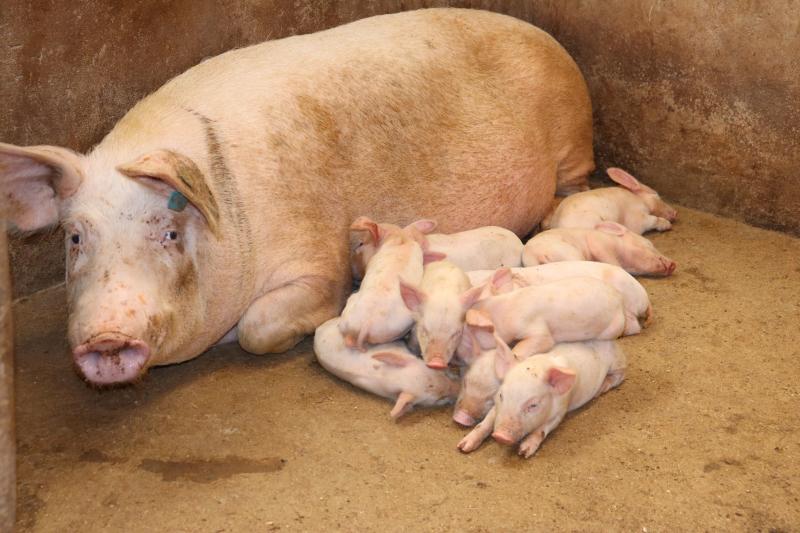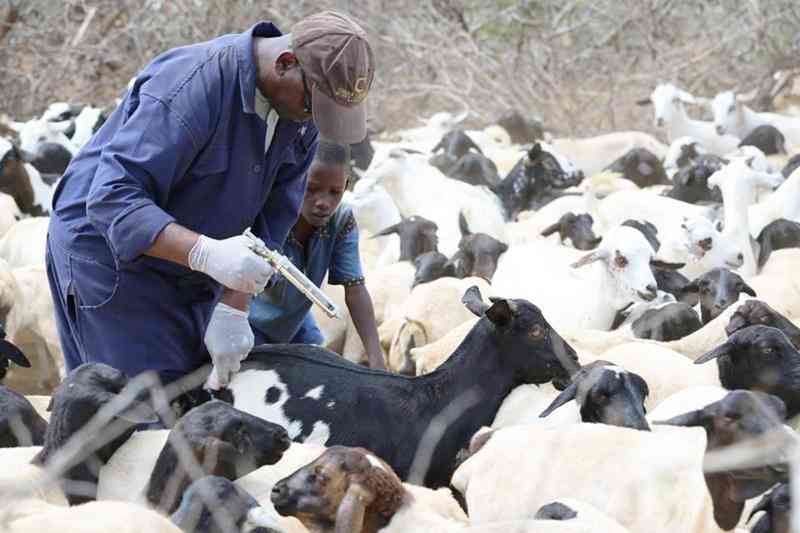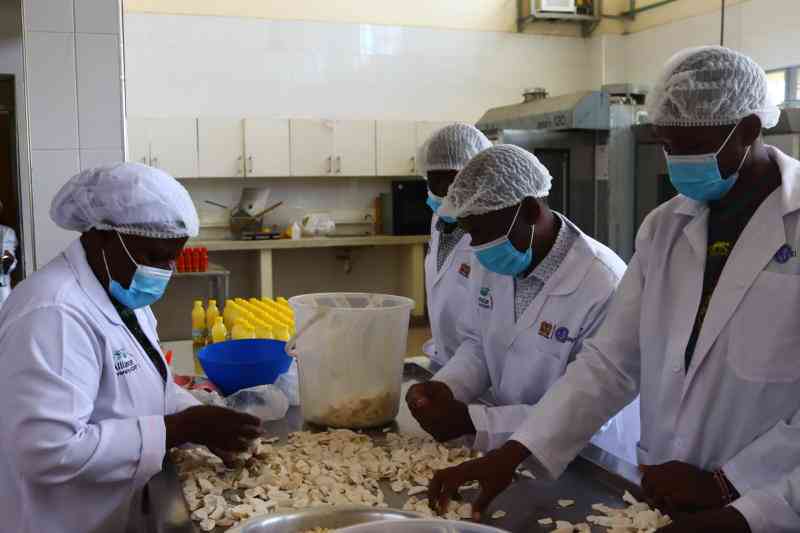
When a disease strikes in a pig farm, the farmer is rarely prepared and many at times does not know how to detect the disease and take the necessary action.
The goal of every pig farmer should be to prevent rather than to be forced to treat a disease.
To achieve this, you should be on the lookout for the most common signs exhibited by sick pigs.
These are: lack of appetite for feed/ water, rapid breathing, droopy ears/ ears pointing downwards, dull eyes, skin and hair, reddish skin in case of white coloured pigs., diarrhoea which may sometimes be bloody, isolation from the rest of the herd and a limp tail.
Common diseases
- Mastitis:
Is a bacterial infection causing inflammation of the mammary organs. The bacteria enter the teats orifice or wounds in the udder.
Signs: swollen and painful udder, reduction in milk from the affected quarters, the sow refuses her piglets to suckle, depression and fever.
Prevention: provision of clean adequate bedding for the sow, keeping the pen dry, clean and free of dampness, practising teeth clipping to avoid wounds on the udder as a result of bites during suckling.
Treatment: gently massaging the udder with Luke warm water, extracting milk from the affected udder and discarding it.
Separate the affected sows from its piglets to reduce associated stress, use recommended antibiotics as guided by a qualified veterinarian.
- Anaphrodiasis (failure to breed)
This is a condition exhibited by sows/gilts not coming on heat due to reasons like: emaciation, minerals deficiency in feeds, overweight and heavy infestation with parasites leading to stress.
Prevention: feeding the correct diet to the sow and having regular deworming to control internal parasites.
Treatment: could involve the use of hormones recommended by a qualified vet. Gilts should not be treated because the condition might persist after every litter if the hormone is used.
- Abortions, mummies and still births
This may happen as a result of a viral infection during pregnancy. Some sows fail to farrow completely or farrow a combination of dead and weak piglets or mummified piglets.
Abortion may also occur upon a slightest form of stress like high severe fever, trauma or even fighting. This can be mitigated by providing supportive care and euthanizing piglets with little survival chance.
Aborted foetus and placenta can be collected in a polythene bag, frozen and availed to a qualified veterinarian to ascertain the cause.
There are vaccines available and a veterinarian should be consulted to give vaccination guidelines on both gilts and sow for protection.
- Acute pneumonia
It’s an infection of the lungs caused by bacteria or fungi resulting in respiratory symptoms. It affects pig of all ages but piglets are mostly affected and can spread rapidly among the herd.
Signs: depression, lack of appetite, rapid breathing, fever, barking cough and some are found dead.
Control: isolate the affected pigs to a draft free section to prevent spread of the infection.
Antibiotic treatment should be sought in severe cases under the guidance of a qualified vet.
- Neonatal deaths
Refers to death of piglets before weaning and is common in most farms leading to huge economic loss.
Causes: starvation, failure of passive transfer of maternal immunity to piglets through colostrum, trauma due to cold, umbilical infection, lameness, weakness/ dehydration or post-partum/ pre-partum stress and the sow kills the piglets once born.
It’s advisable to monitor piglets closely they adequately suckle at any time. They should be fostered or fed on milk replacer where possible.
The farrowing area should have a warm creep area to allow piglets to be comfortable and out of the range of the sow.
This area should be washed, disinfected and dried between litters. Disinfect the umbilical stump (dip the navel with an iodine solution) soon after birth.
Prevention is better than cure.
Author; Dr. Paul R. N. Kangethe (BVM, UoN)
Email; [email protected]
Want to get latest farming tips and videos?
Join Us
 The Standard Group Plc is a multi-media organization
with investments in media platforms spanning newspaper print operations,
television, radio broadcasting, digital and online services. The Standard Group
is recognized as a leading multi-media house in Kenya with a key influence in
matters of national and international interest.
The Standard Group Plc is a multi-media organization
with investments in media platforms spanning newspaper print operations,
television, radio broadcasting, digital and online services. The Standard Group
is recognized as a leading multi-media house in Kenya with a key influence in
matters of national and international interest.
 The Standard Group Plc is a multi-media organization
with investments in media platforms spanning newspaper print operations,
television, radio broadcasting, digital and online services. The Standard Group
is recognized as a leading multi-media house in Kenya with a key influence in
matters of national and international interest.
The Standard Group Plc is a multi-media organization
with investments in media platforms spanning newspaper print operations,
television, radio broadcasting, digital and online services. The Standard Group
is recognized as a leading multi-media house in Kenya with a key influence in
matters of national and international interest.







